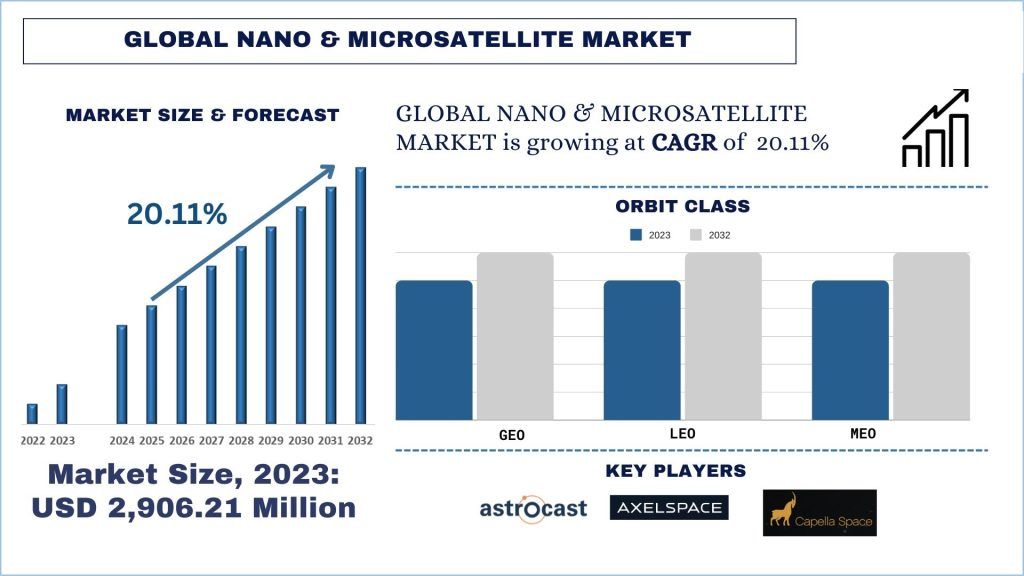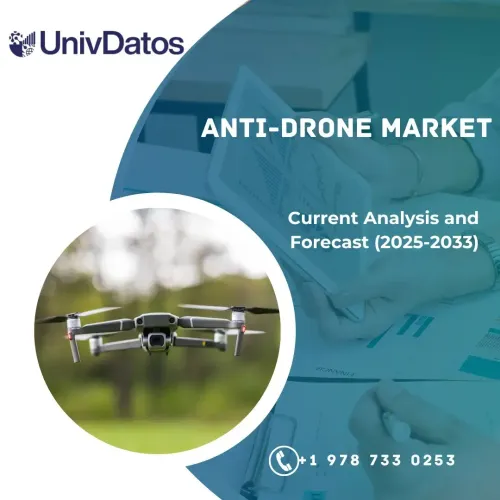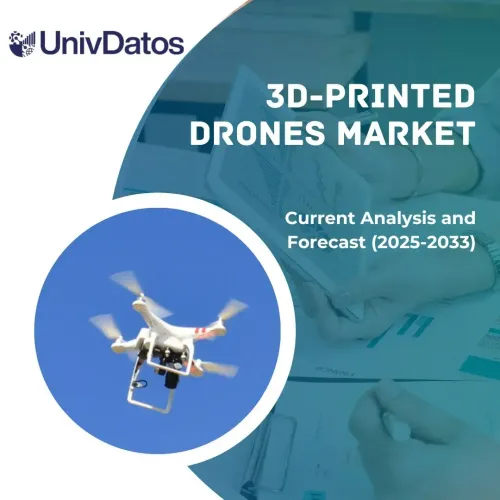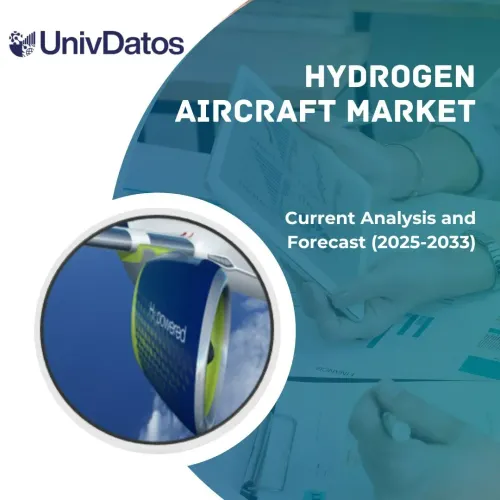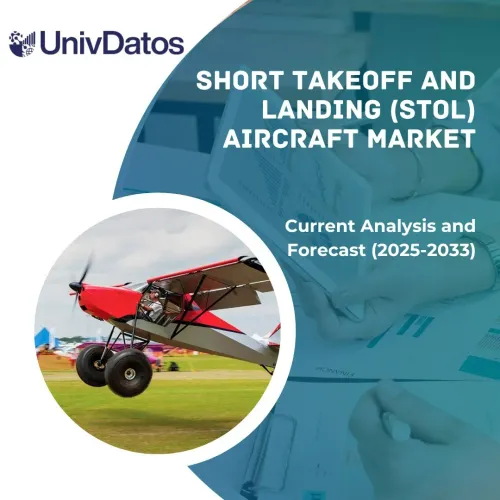- Home
- About Us
- Industry
- Services
- Reading
- Contact Us
Nano & Microsatellite Market: Current Analysis and Forecast (2024-2032)
Emphasis on Application (Communication, Earth Observation, Navigation, Space Observation, Others); By Orbit Class (GEO, LEO, MEO), By End-User (Electric, Gas-based Liquid Fuel); By Application (Engine Component, Space Component, Structural Component) and Regions (North America (The US, Canada, Rest of North America), Europe (Germany, The UK, France, Italy, Spain, Rest of the Europe), Asia-pacific (China, Japan, India, Rest of the Asia-pacific), Rest of the World)
Global Nano & Microsatellite Market Size & Forecast
The Global Nano & Microsatellite market was valued at USD 2,906.21 million in 2023 and is expected to grow at a strong CAGR of around 20.11% during the forecast period (2024-2032) owing to rising demand for Nano & Microsatellite in the spacecraft industry across the globe.
Global Nano & Microsatellite Market Analysis
Nano & microsatellites are smaller satellites orbiting around the earth to deliver earth observation, satellite communication, navigation, etc. These satellites are of smaller size as nanosatellites ranging between 1 to 10 kg and microsatellites ranging between 10 kg to 100 kg. These satellites are highly cost-effective for limited time-period operations such as earth observation, telecommunications, scientific research, and technology demonstration.
The Global Nano & Microsatellite market was valued at USD 2,906.21 million in 2023 and is expected to grow at a strong CAGR of around 20.11% during the forecast period (2024-2032). One of the factors that has been majorly attributed to market growth is the increasing focus on earth observation through nano and microsatellites. As these satellites offer a balance between cost and performance for a wide range of applications such as satellite navigation constellation or satellite communication, the satellite types have become a lucrative choice.
For instance, in 2021, Poland announced the launch of its first microsatellite, focusing on providing services related to earth observation. The satellite named Eagle Eye, a 50 kg, is based on the HyperSat microsatellite platform in development by Creotech Instruments.
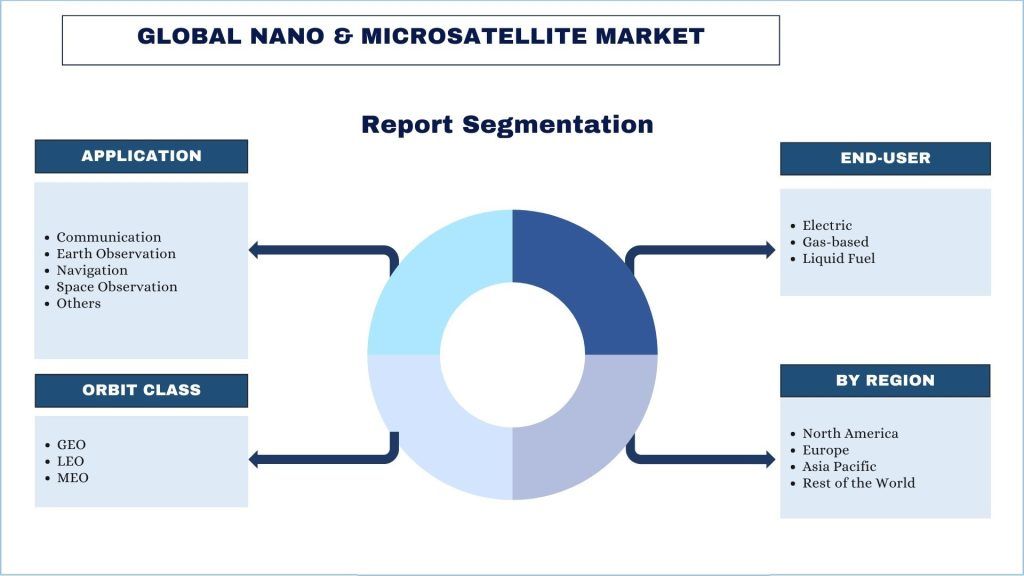
Global Nano & Microsatellite Market Trends
This section discusses the key market trends that are influencing the various segments of the Global Nano & Microsatellite Market as identified by our team of research experts.
Rising Demand for Navigation & Earth Observation Constellation to Promote the Future Market
Navigation constellation has emerged as a crucial capability for many countries across the globe. Some countries already operate a vast navigation constellation with extended capabilities covering major parts of the earth. However, the need to improve navigation by several emerging countries has further induced the need for navigation constellations. Countries such as India, Indonesia, Poland, Brazil, etc., are some of the emerging economies that have announced their intention to initiate/launch their navigation constellation in the coming years.
For instance, in 2024, Blacksky Technology Inc. and Thales Alenia Space won a contract from the government of Indonesia for the delivery of Gen3 earth observation satellites with ground station capabilities and flight operation support. The overall cost of the project is USD 50 Million for delivering 3 satellites in the coming years.
In another instance, Greece announced to invest USD 70 million on earth observation microsatellite constellation. In 2023, three companies OHB Hellas, Thales Hellas, and SITAEL Hellas were all selected for the study phase of the project’s development.
Considering the rising demand for navigation and earth observation satellite constellations across the globe, the demand for Nano & Microsatellite in the particular category is anticipated to find rapid growth, subsequently improving its market in the forthcoming years.
North America is Expected to Hold Major Market Share During Forecast Period
North America holds the major market share in the Nano and microsatellite market. One of the factors contributing to the market growth is the presence of a huge space industry focusing on satellite launches, both military and commercial missions. Additionally, the region is also one of the pioneers in satellite launches with long-standing experience in satellite manufacturing and launching technology.
There are several other factors that support the expansion of the nano and microsatellite market in the North American region, including technological innovation, government support, market demand for satellite services regionally and across the globe, educational institutes investing in satellite technology and research, and conducive regulatory compliances. Government agencies such as the US Department of Defense and NASA have been instrumental in developing and promoting the usage of nano and microsatellites in various military and commercial aerospace applications. Additionally, the respective organizations offer contracts and regulatory support for the satellite manufacturing ecosystem to thrive in the region.
In 2024, NASA earned a contract worth USD 6 billion to Kongsberg NanoAvionics US LLC and three other companies under its Rapid Spacecraft Acquisition IV (Rapid IV) On-Ramp III contract. The contract under the Rapid IV program would help government agencies conduct space missions efficiently in the process of acquiring spacecraft and satellite systems.
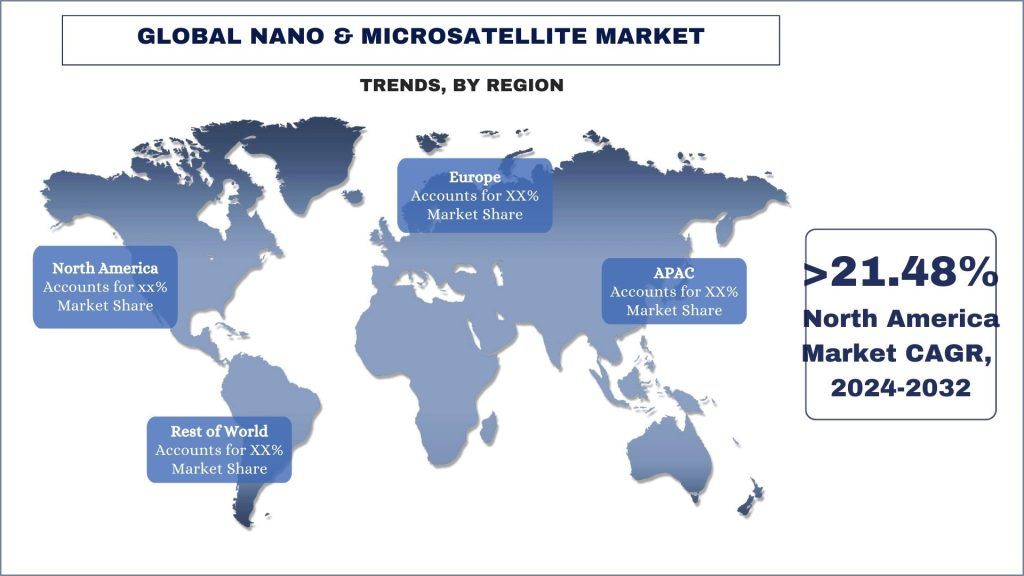
Global Nano & Microsatellite Industry Overview
The Global Nano & Microsatellite market is competitive and fragmented, with the presence of several global and international market players. The key players are adopting different growth strategies to enhance their market presence, such as partnerships, agreements, collaborations, new product launches, geographical expansions, and mergers and acquisitions. Some of the major players operating in the market are Astrocast, Axelspace Corporation, Capella Space Corp., China Aerospace Science and Technology Corporation, German Orbital System, GOMSpace ApS, ICEYS Ltd, LeoStella LLC, Planet Lab PBC, L3harris Technologies.
Global Nano & Microsatellite Market News
- In 2023, India launched seven satellites from Singapore into low earth orbit. The primary satellite had a weight of 360 kg, while the rest of the satellites were in the category of microsatellites.
- In 2022, the UK announced the launch of Orbex Prime ‘eco-rocket’ from a remote launch pad in the Highlands of Scotland. The launcher would be used to launch the bulk of nanosatellites in space in the coming years.
Global Nano & Microsatellite Market Report Coverage

Reasons to buy this report:
- The study includes market sizing and forecasting analysis validated by authenticated key industry experts.
- The report presents a quick review of overall industry performance at one glance.
- The report covers an in-depth analysis of prominent industry peers with a primary focus on key business financials, product portfolios, expansion strategies, and recent developments.
- Detailed examination of drivers, restraints, key trends, and opportunities prevailing in the industry.
- The study comprehensively covers the market across different segments.
- Deep dive regional level analysis of the industry.
Customization Options:
The Global Nano & Microsatellite market can further be customized as per the requirement or any other market segment. Besides this, UMI understands that you may have your own business needs; hence, feel free to connect with us to get a report that completely suits your requirements.
Table of Content
Research Methodology for the Global Nano & Microsatellite Market Analysis (2024-2032)
Analyzing the historical market, estimating the current market, and forecasting the future market of the Global Nano & Microsatellite market were the three major steps undertaken to create and analyze the adoption of Global Nano & Microsatellite in major regions globally. Exhaustive secondary research was conducted to collect the historical market numbers and estimate the current market size. Secondly, to validate these insights, numerous findings and assumptions were taken into consideration. Moreover, exhaustive primary interviews were also conducted with industry experts across the value chain of the Global Nano & Microsatellite market. Post assumption and validation of market numbers through primary interviews, we employed a top-down/bottom-up approach to forecasting the complete market size. Thereafter, market breakdown and data triangulation methods were adopted to estimate and analyze the market size of segments and sub-segments of the industry. Detailed methodology is explained below:
Analysis of Historical Market Size
Step 1: In-Depth Study of Secondary Sources:
Detail secondary study was conducted to obtain the historical market size of the Global Nano & Microsatellite market through company internal sources such as annual reports & financial statements, performance presentations, press releases, etc., and external sources including journals, news & articles, government publications, competitor publications, sector reports, third-party database, and other credible publications.
Step 2: Market Segmentation:
After obtaining the historical market size of the Global Nano & Microsatellite market, we conducted a detailed secondary analysis to gather historical market insights and share for different segments & sub-segments for major regions. Major segments are included in the report as by application, by orbit class and by end-users. Further regional/country-level analyses were conducted to evaluate the overall adoption of testing models in that region.
Step 3: Factor Analysis:
After acquiring the historical market size of different segments and sub-segments, we conducted a detailed factor analysis to estimate the current market size of the Global Nano & Microsatellite market. Further, we conducted factor analysis using dependent and independent variables such as by application, by orbit class and by end-users in the Global Nano & Microsatellite market. A thorough analysis was conducted for demand and supply-side scenarios considering top partnerships, mergers and acquisitions, business expansion, and product launches in the Global Nano & Microsatellite market sector across the globe.
Current Market Size Estimate & Forecast
Current Market Sizing: Based on actionable insights from the above 3 steps, we arrived at the current market size, key players in the Global Nano & Microsatellite market, and market shares of the segments. All the required percentage shares split, and market breakdowns were determined using the above-mentioned secondary approach and verified through primary interviews.
Estimation & Forecasting: For market estimation and forecast, weights were assigned to different factors, including drivers & trends, restraints, and opportunities available for the stakeholders. After analyzing these factors, relevant forecasting techniques, i.e., the top-down/bottom-up approach, were applied to arrive at the market forecast for 2032 for different segments and sub-segments across the major markets globally. The research methodology adopted to estimate the market size encompasses:
- The industry’s market size, in terms of revenue (USD) and the adoption rate of the Global Nano & Microsatellite market across the major markets domestically
- All percentage shares, splits, and breakdowns of market segments and sub-segments
- Key players in the Global Nano & Microsatellite market in terms of products offered. Also, the growth strategies adopted by these players to compete in the fast-growing market.
Market Size and Share Validation
Primary Research: In-depth interviews were conducted with the Key Opinion Leaders (KOLs), including Top Level Executives (CXO/VPs, Sales Head, Marketing Head, Operational Head, Regional Head, Country Head, etc.) across major regions. Primary findings were then summarized, and statistical analysis was performed to prove the stated hypothesis. Inputs from primary research were consolidated with secondary findings, hence turning information into actionable insights.
Split of Primary Participants in Different Regions
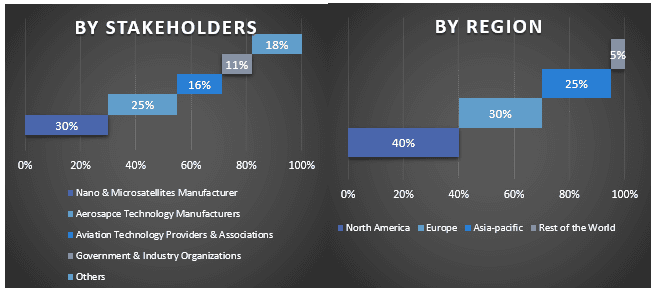
Market Engineering
The data triangulation technique was employed to complete the overall market estimation and to arrive at precise statistical numbers for each segment and sub-segment of the Global Nano & Microsatellite market. Data was split into several segments and sub-segments after studying various parameters and trends in the by application, by orbit class and by end-users in the Global Nano & Microsatellite market.
The main objective of the Global Nano & Microsatellite Market Study
The current & future market trends of the Global Nano & Microsatellite market were pinpointed in the study. Investors can gain strategic insights to base their discretion for investments on the qualitative and quantitative analysis performed in the study. Current and future market trends determined the overall attractiveness of the market at a regional level, providing a platform for the industrial participant to exploit the untapped market to benefit from a first-mover advantage. Other quantitative goals of the studies include:
- Analyze the current and forecast market size of the Global Nano & Microsatellite market in terms of value (USD). Also, analyze the current and forecast market size of different segments and sub-segments.
- Segments in the study include areas of by application, by orbit class and by end-users.
- Define and analyze the regulatory framework for the Global Nano & Microsatellite
- Analyze the value chain involved with the presence of various intermediaries, along with analyzing customer and competitor behaviors of the industry.
- Analyze the current and forecast market size of the Global Nano & Microsatellite market for the major regions.
- Major countries of regions studied in the report include North America (The US, Canada, and Rest of North America), Europe (The UK, France, Germany, Italy, Spain, Rest of Europe), Asia-pacific (China, Japan, India, Rest of the Asia-pacific), Rest of the World
- Company profiles of the Global Nano & Microsatellite market and the growth strategies adopted by the market players to sustain in the fast-growing market.
- Deep dive regional level analysis of the industry
Frequently Asked Questions FAQs
Q1: What is the current market size and growth potential of the Global Nano & Microsatellite market?
Q2: What are the driving factors for the growth of the Global Nano & Microsatellite market?
Q3: Which segment has the largest share of the Global Nano & Microsatellite market by application?
Q4: Which region will dominate the Global Nano & Microsatellite market?
Related Reports
Customers who bought this item also bought

